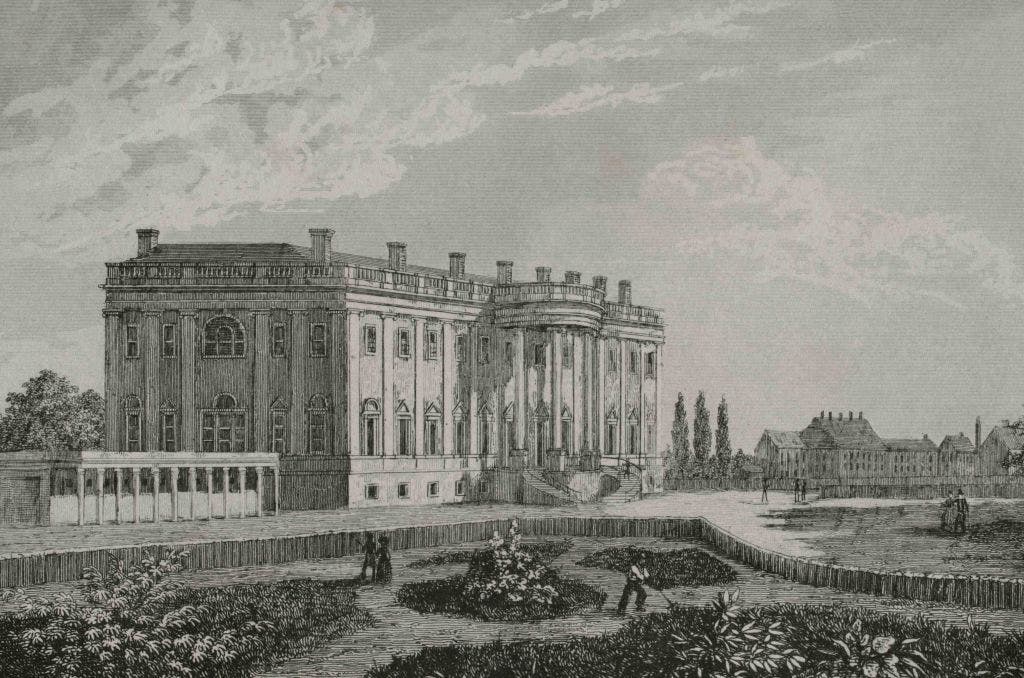On October 13, 1792, construction of the White House, a symbol of American power and political stability, began with the laying of its cornerstone. Irish-born architect James Hoban, who had arrived in the United States in 1785, won the design competition for the neoclassical mansion. Planned and constructed under the personal supervision of President George Washington, the White House was inspired by the Palladian style of the Leinster House in Dublin. President Washington announced the building of a new capital city, Washington, D.C., in 1791, which included plans for an executive mansion.
Constructed of white-gray sandstone quarried from Aquia Creek, the White House was initially named the President’s House or Executive Mansion. Slaves and paid labor were used to clear land and help build the mansion. The White House received its distinct white color in 1798 after being coated in white lime paint. Its name was officially changed to the White House by President Theodore Roosevelt in 1901. Freemasons from nearby Alexandria, Virginia, played a role in lobbying for Hoban to receive the honor of building the White House, and they also led the cornerstone ceremony.
The White House faced devastation in 1814 when British troops ransacked and torched the mansion and the U.S. Capitol during the War of 1812. The resulting fire destroyed most of the capital city’s major public buildings, but Hoban oversaw the reconstruction of the White House. Its distinctive porticoes were completed in 1829, giving the mansion its recognizable classical look. It features 132 rooms, 35 bathrooms, 28 fireplaces, and eight staircases, with 570 gallons of white paint needed to coat its facade. The White House cost $232,372 to build and was the largest home in the United States until after the Civil War.
During Washington’s presidency, the White House was largely built, but he never lived in it. It was second President John Adams and his wife Abigail who moved into the executive mansion in November 1800. Adams expressed his hopes for the future of the White House in a letter to his wife, wishing for honest and wise men to rule under its roof. The White House remains an iconic symbol of American democracy and governance, representing the enduring principles of the United States. Today, it serves as the official residence and workplace of the President of the United States, a testament to the enduring legacy of its construction and its importance in American history.













